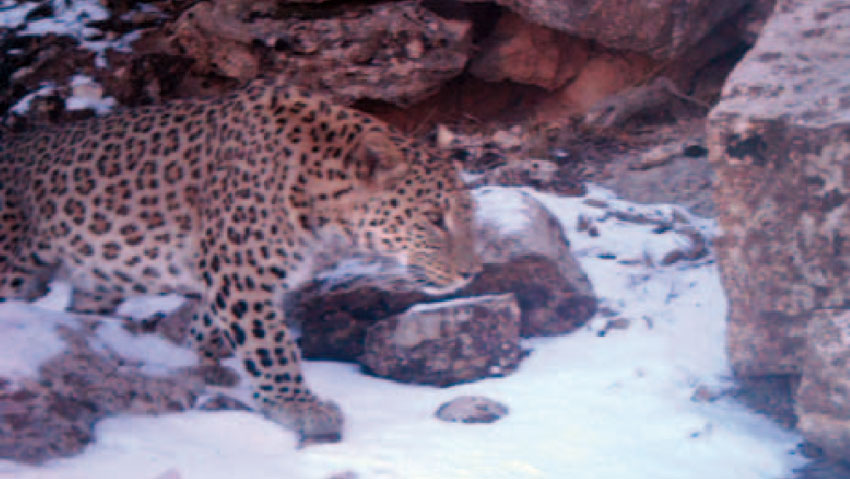
Sir David Attenborough’s ‘Asia’ dropped on the BBC this week, bringing us some of the best wildlife filmmaking to be seen.
Filmed over four years, the seven-part series explores the natural wonders of our planet's largest continent, the filmmakers bring us a lone wolf on the Tibetan Plateau, red pandas in the foothills of the Himalayas in Nepal, and take viewers everywhere from Borneo to Siberia.
One of the most incredible stories in the series was that of Hana Raza, an Iraqi Kurdish conservation biologist who first discovered that there were Persian leopards living in Iraq’s Kurdistan region, and brothers and conservationists Nabaz and Bahez Horeni.
It’s thought that there are no more than two dozen leopards in the entire country, and finding them on the steep mountainside forests was a serious challenge for the filmmakers.
And there’s another obstacle - millions of decades old, unexploded mines.
This is where the trail cameras become an essential resource in the conservation of these critically endangered animals.
Raza has been camera trapping the leopards in the area for 12 years, however, it was only when setting camera traps for ‘Asia’ have the first images of female leopards, and leopard cubs ever been captured.
Raza first found Persian leopards in the area in 2012, and in a paper written by Raza and other researchers at the time they write that the discovery was made “in particular thanks to a camera trap.”
They used two models, the Stealth Cam STC-1540IR, and the Keep Guard KG 550 model.
In the program Raza said:
“I did not think in a million years I would be looking at an amazing shot of a family of Persian leopards, no.”
In an interview with Earth Island Journal Raza said:
“The leopard is crucial to conserve because, as an apex predator, it is at the top of the food chain, and the food chain works like a game of domino: if one piece is removed, the entire system falls.
“These efforts aren’t just for the leopard’s protection. The leopard serves as an umbrella species under which vast essential ecosystems and endangered animals and plants are protected.”
Interesting in capturing your own wildlife footage? Take a look at our guides to the best trail cameras, the best cellular trail cameras and the best camera drones.







